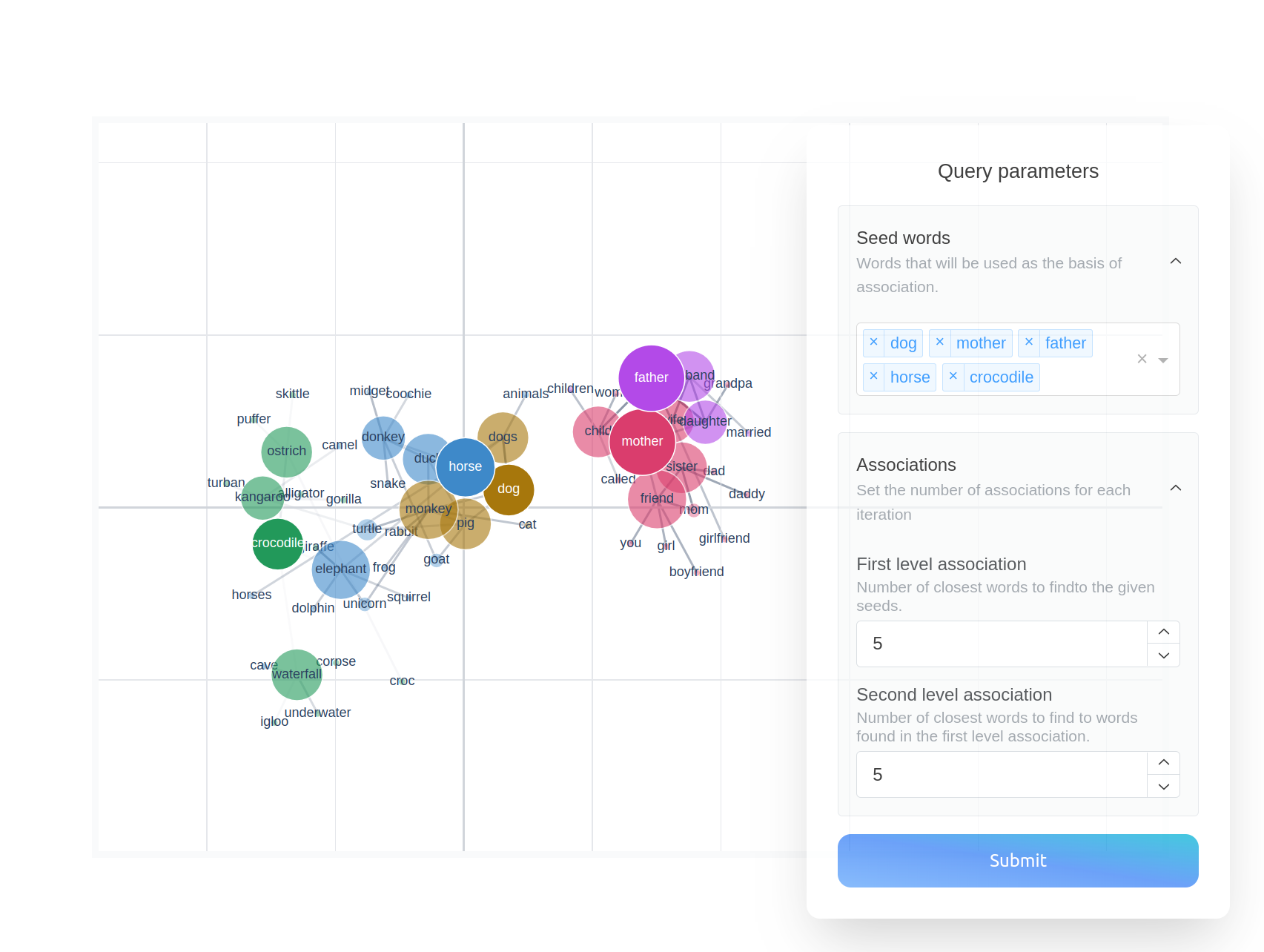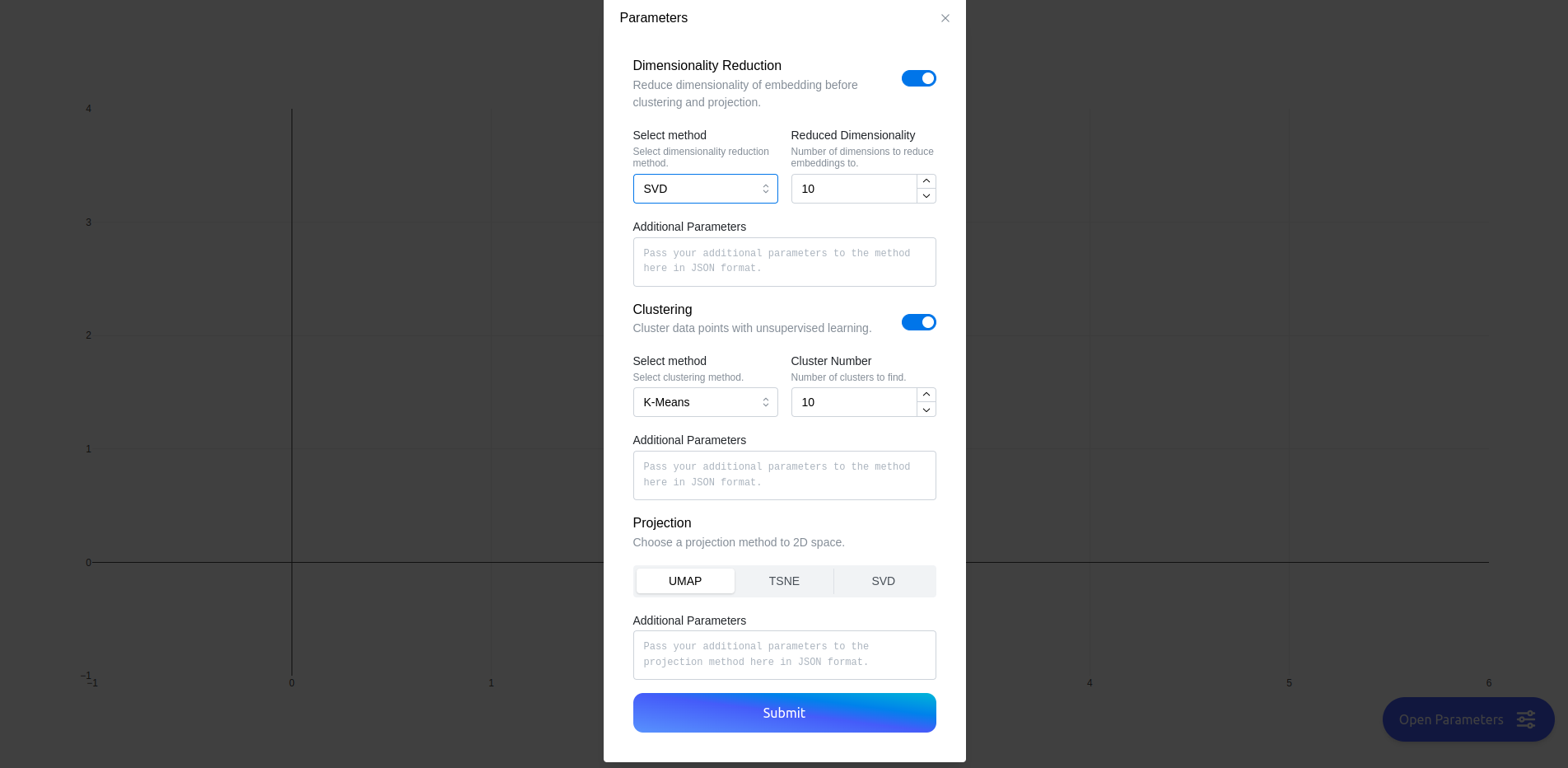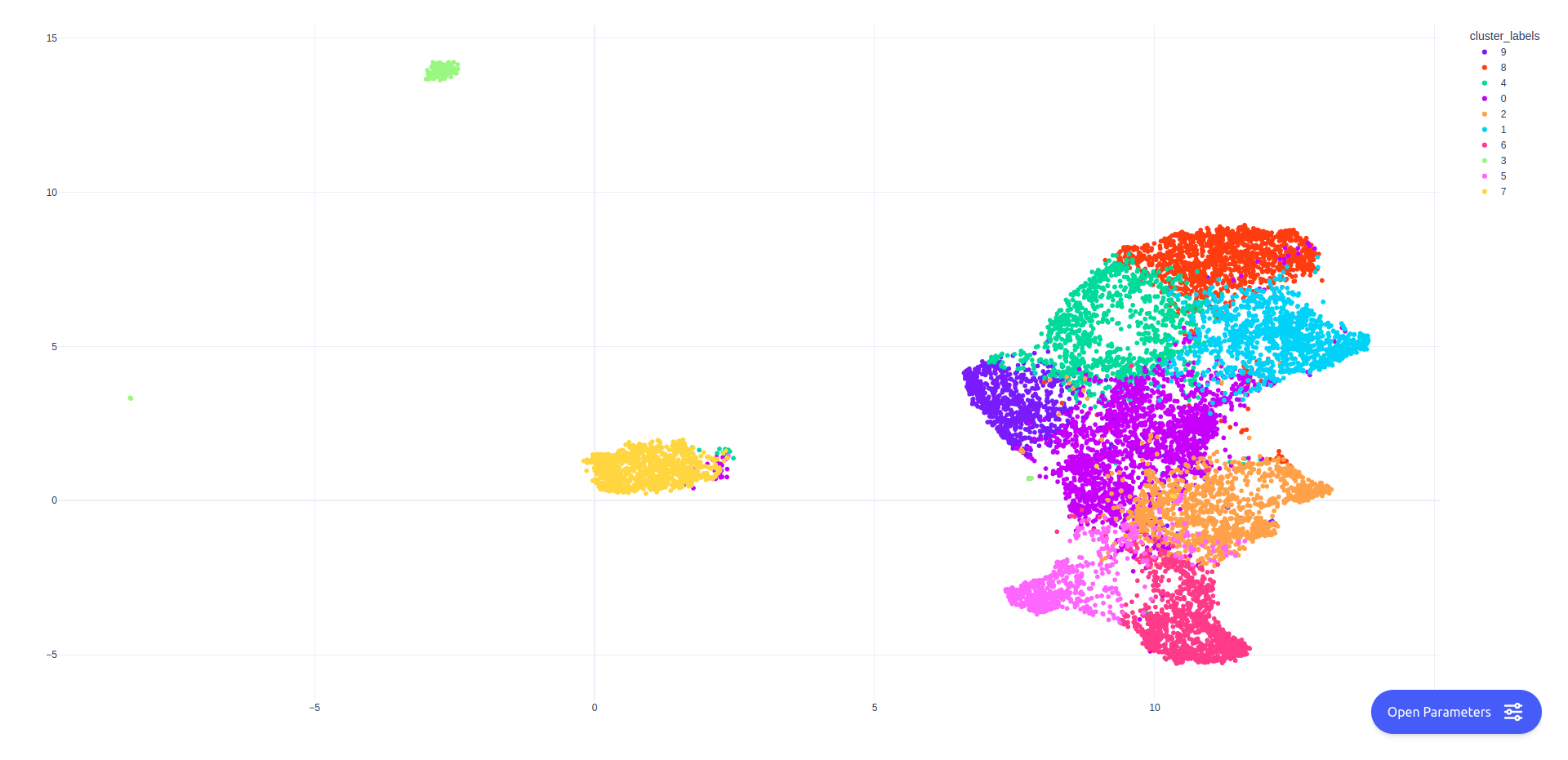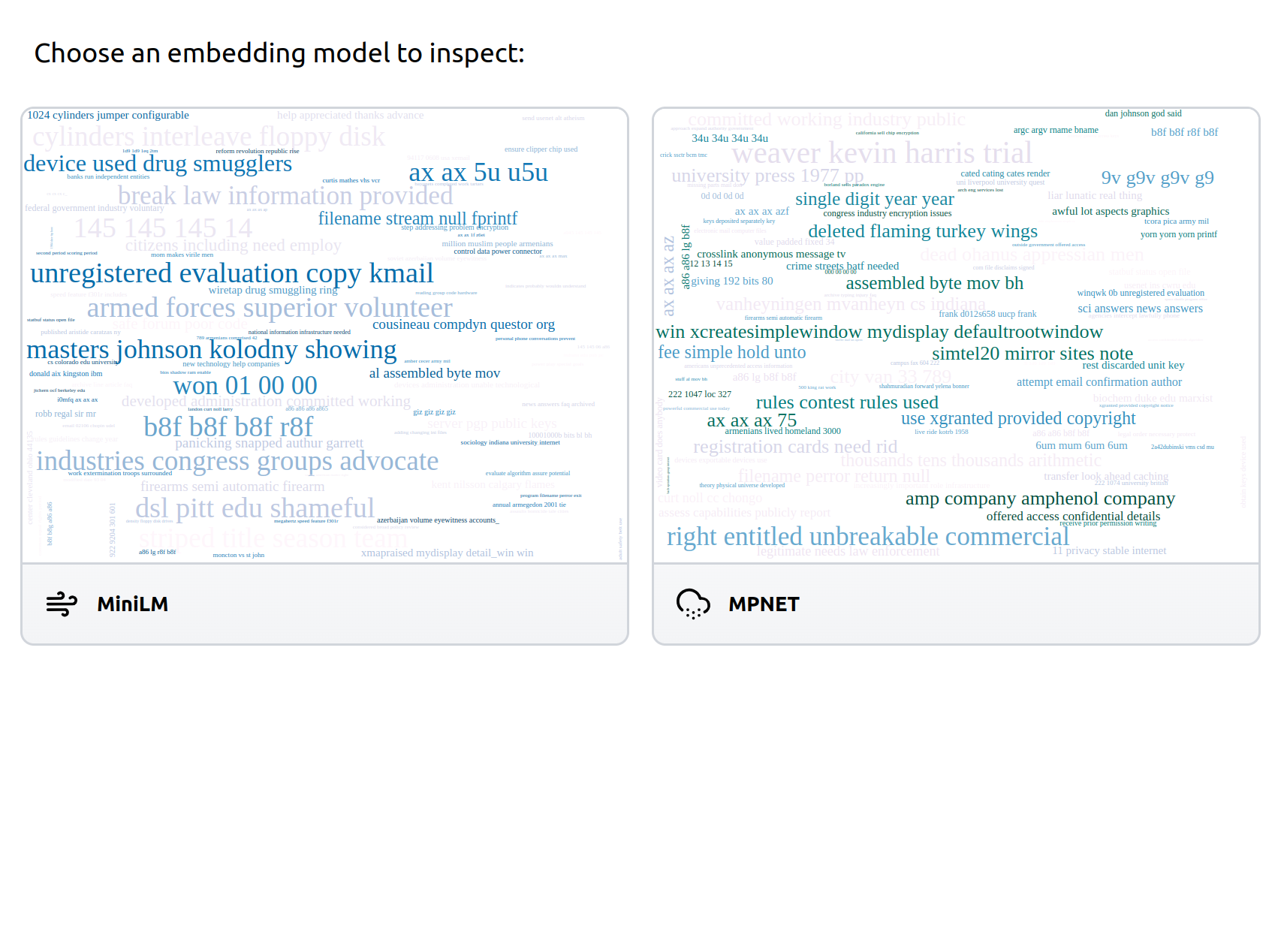Tools for interactive visual exploration of semantic embeddings.
You can now pass a custom Neofuzz process to the explorer if you have specific requirements.
from embedding_explorer import show_network_explorer
from neofuzz import char_ngram_process
process = char_ngram_process()
show_network_explorer(corpus=corpus, embeddings=embeddings, fuzzy_search=process)Install embedding-explorer from PyPI:
pip install embedding-explorerembedding-explorer comes with a web application built for exploring semantic relations in a corpus with the help of embeddings. In this section I will show a couple of examples of running the app with different embedding models and corpora.
Let's say that you would like to explore semantic relations by investigating word embeddings generated with Word2Vec. You can do this by passing the vocabulary of the model and the embedding matrix to embedding-explorer.
For this example I will use Gensim, which can be installed from PyPI:
pip install gensimWe will download GloVe Twitter 25 from gensim's repositories.
from gensim import downloader
from embedding_explorer import show_network_explorer
model = downloader.load("glove-twitter-25")
vocabulary = model.index_to_key
embeddings = model.vectors
show_network_explorer(corpus=vocabulary, embeddings=embeddings)This will open a new browser window with the Explorer, where you can enter seed words and set the number of associations that you would like to see on the screen.
If you want to explore relations in a corpus using let's say a sentence transformer, which creates contextually aware embeddings, you can do so by specifying a scikit-learn compatible vectorizer model instead of passing along an embedding matrix.
One clear advantage here is that you can input arbitrary sequences as seeds instead of a predetermined set of texts.
We are going to use the package embetter for embedding documents.
pip install embetter[sentence-trf]I decided to examine four-grams in the 20newsgroups dataset. We will limit the number of four-grams to 4000 so we only see the most relevant ones.
from embetter.text import SentenceEncoder
from embedding_explorer import show_network_explorer
from sklearn.datasets import fetch_20newsgroups
from sklearn.feature_extraction.text import CountVectorizer
corpus = fetch_20newsgroups(
remove=("headers", "footers", "quotes"),
).data
# We will use CountVectorizer for obtaining the possible n-grams
four_grams = (
CountVectorizer(
stop_words="english", ngram_range=(4, 4), max_features=4000
)
.fit(corpus)
.get_feature_names_out()
)
model = SentenceEncoder()
show_network_explorer(corpus=four_grams, vectorizer=model)🌟 New in version 0.5.0
In embedding-explorer you can now inspect corpora or embeddings by projecting them into 2D space, and optionally clustering observations.
In this example I'm going to demonstrate how to visualize 20 Newsgroups using various projection and clustering methods in embedding-explorer. We are going to use sentence transformers to encode texts.
from embetter.text import SentenceEncoder
from sklearn.datasets import fetch_20newsgroups
from embedding_explorer import show_clustering
newsgroups = fetch_20newsgroups(
remove=("headers", "footers", "quotes"),
)
corpus = newsgroups.data
show_clustering(corpus=corpus, vectorizer=SentenceEncoder())In the app you can whether or how you want to reduce embedding dimensionality, how you want to cluster the embeddings, and also how you intend to project them onto the 2D plane.
After this you can investigate the semantic structure of your corpus interactively.
If you have multiple models to examine the same corpus or multiple corpora, that you want to examine with the same model, then you can create a dashboard containing all of these options, that users will be able to click on and that takes them to the appropriate explorer page.
For this we will have to assemble these options into a list of Card objects, that contain the information about certain pages.
In the following example I will set up two different sentence transformers with the same corpus from the previous example.
from embetter.text import SentenceEncoder
from embedding_explorer import show_dashboard
from embedding_explorer.cards import NetworkCard, ClusteringCard
cards = [
NetworkCard("MiniLM", corpus=four_grams, vectorizer=SentenceEncoder("all-MiniLM-L12-v2")),
NetworkCard("MPNET", corpus=four_grams, vectorizer=SentenceEncoder("all-mpnet-base-v2")),
]
show_dashboard(cards)



